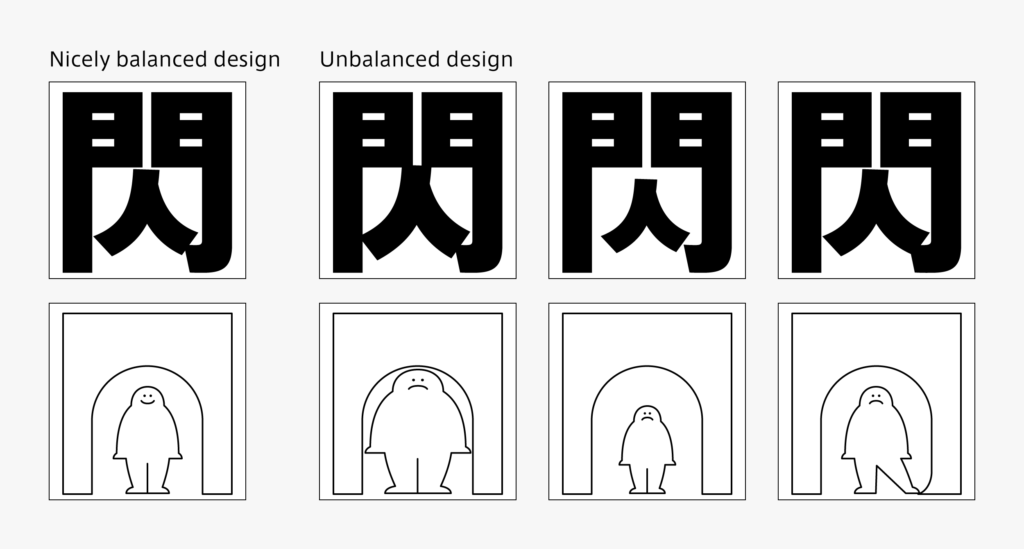The radicals of the enclosed system include “tare,” “nyou,” and “kamae.” Thickness is adjusted so that appearance of the enclosing side is stronger, and the enclosed part is weaker. Regarding thickness, the enclosed part is created at one stage thinner, and the tones of the entire character are leveled, while avoiding congestion. The thicker the weight, the more tendency there is for significant differences at this one stage. There is a previously introduced principle: “make the vertical stroke thicker the further it goes to the right, and make the horizontal stroke thicker the further it goes to the bottom.” For the enclosed system, adjustment is made by differentiating the enclosing side and the enclosed side, respectively.

Adjustment is made while matching the shape of each element in the same way as the other groups. For example, where the hook of “門” and the right sweep of “人” are about to collide in “閃,” adjustment is made by shortening either or both parts.
T.I
Series archive Japanese Type Design / Constituent of Kanji and Creation Points
- Constituent of Kanji and Creation Points 05: “Consistency”
- Constituent of Kanji and Creation Points 04: “Enclosed System”
- Constituent of Kanji and Creation Points 03: “Horizontal Division System”
- Constituent of Kanji and Creation Points 02: “Vertical Division System”
- Constituent of Kanji and Creation Points 01: “Radical”